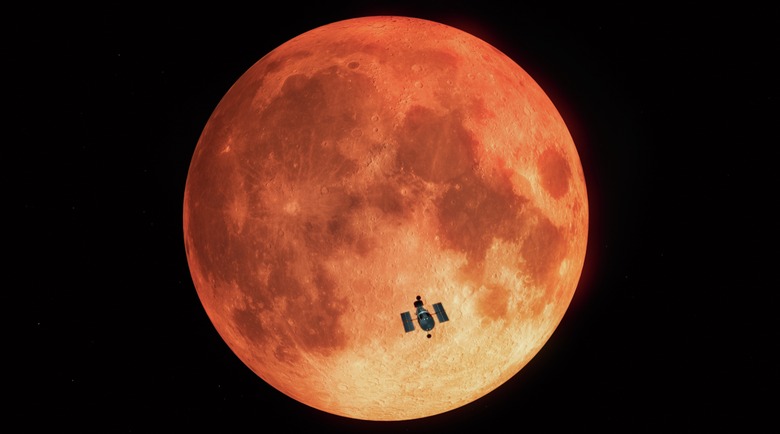New Simulation Shows How The Moon May Have Formed
A new simulation of how the Moon formed shows that it could have formed in the span of mere hours, NASA says. Billions of years ago, when Earth was much younger, it would have looked a lot different than it does now. This new simulation posits that an object the size of Mars may have collided with the Earth of that time, creating what would later become our Moon.
The object in question is called Theia. This isn't a new theory, either. Scientists have long believed that the origin of the Moon was caused by a chunk of the Earth that was knocked loose millions or billions of years ago. But, how exactly the Moon formed has always been a mystery – as we can't just call up people from that time and ask them.
Jacob Kegerreis, a postdoctoral researcher with NASA's Ames Research Center, lead a study into the possible collision. Kegerreis and other researchers published their findings in The Astrophysical Letters. In the study, the researchers note that they went into the scenario knowing exactly what the outcome of these simulations would be. But it was exciting to learn how the results aligned with the theory.
These are some of the most details simulations of their kind, showcasing Theia as it approaches our planet and then collides with it, matter spewing into space before being pulled back towards Earth. The matter immediately separated into two parts, showcasing how the Moon may have formed from the collision.
NASA says that previous research explained some aspects of the Moon's properties being so similar to Earth. However, there were always major caveats at play. Basing how the Moon formed on this new simulation would explain one of those big key caveats – why the Moon and the Earth's compositions are as similar as they are.
If the Moon was indeed formed by the collision of an object with Earth, then it would be made from the similar sediments and components that make up the Earth. Previous theories on how the Moon formed relied on most of the matter being from Theia. In this new simulation, much more of the matter used to make the Moon is taken from Earth, thus allowing for the compositions to be so similar.
Based on the compositions we've collected of Moon rock so far, the isotopic signatures taken from rocks found on the Moon are similar to rocks found on Earth. As such, this simulation could be the closest we'll ever come to figuring out how our planet's natural satellite came to be.
Related coverage: Startling discovery shows that the Moon is drifting away from Earth.
